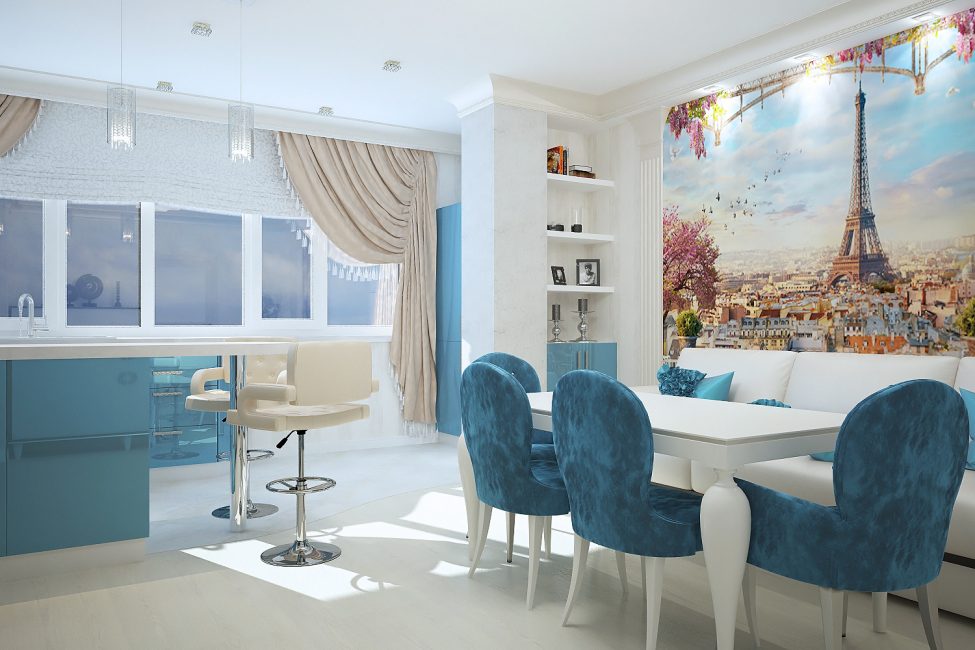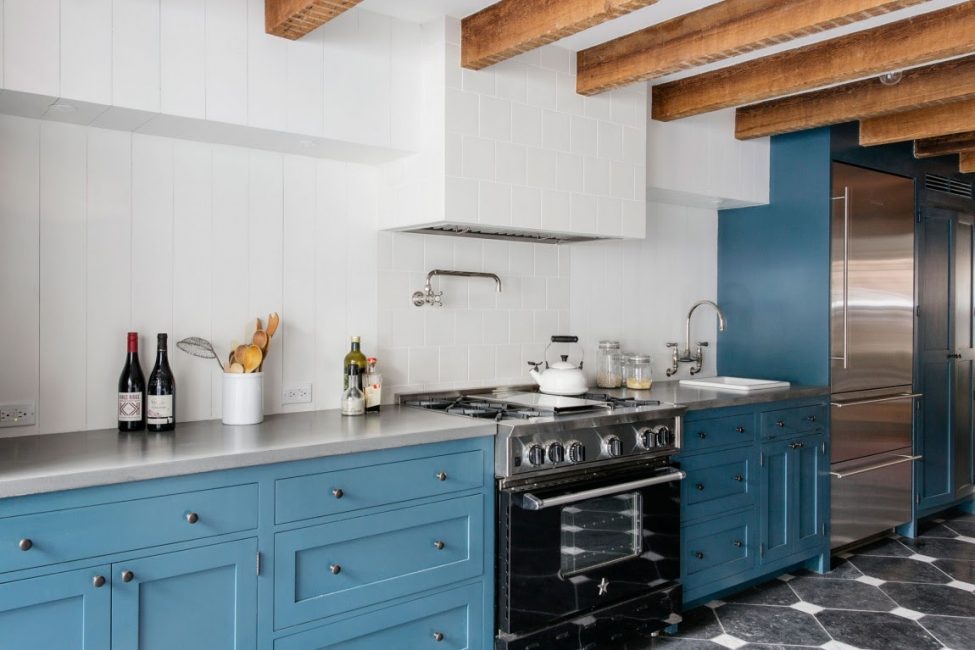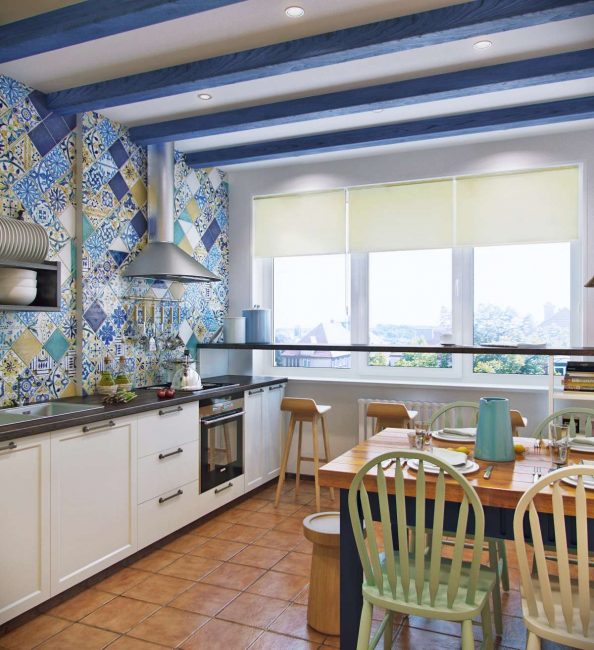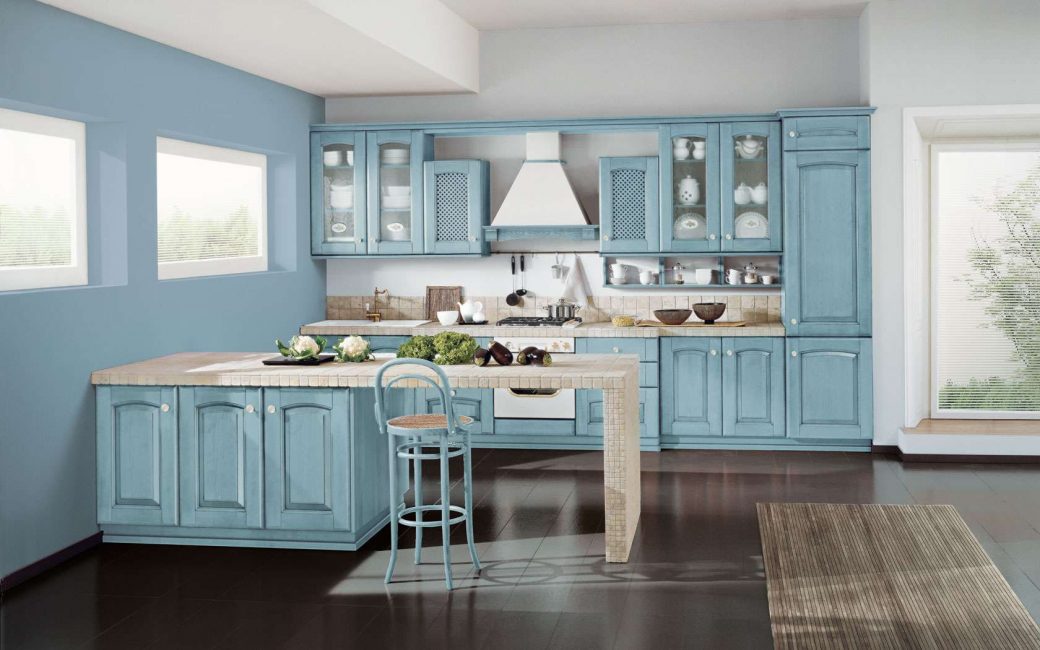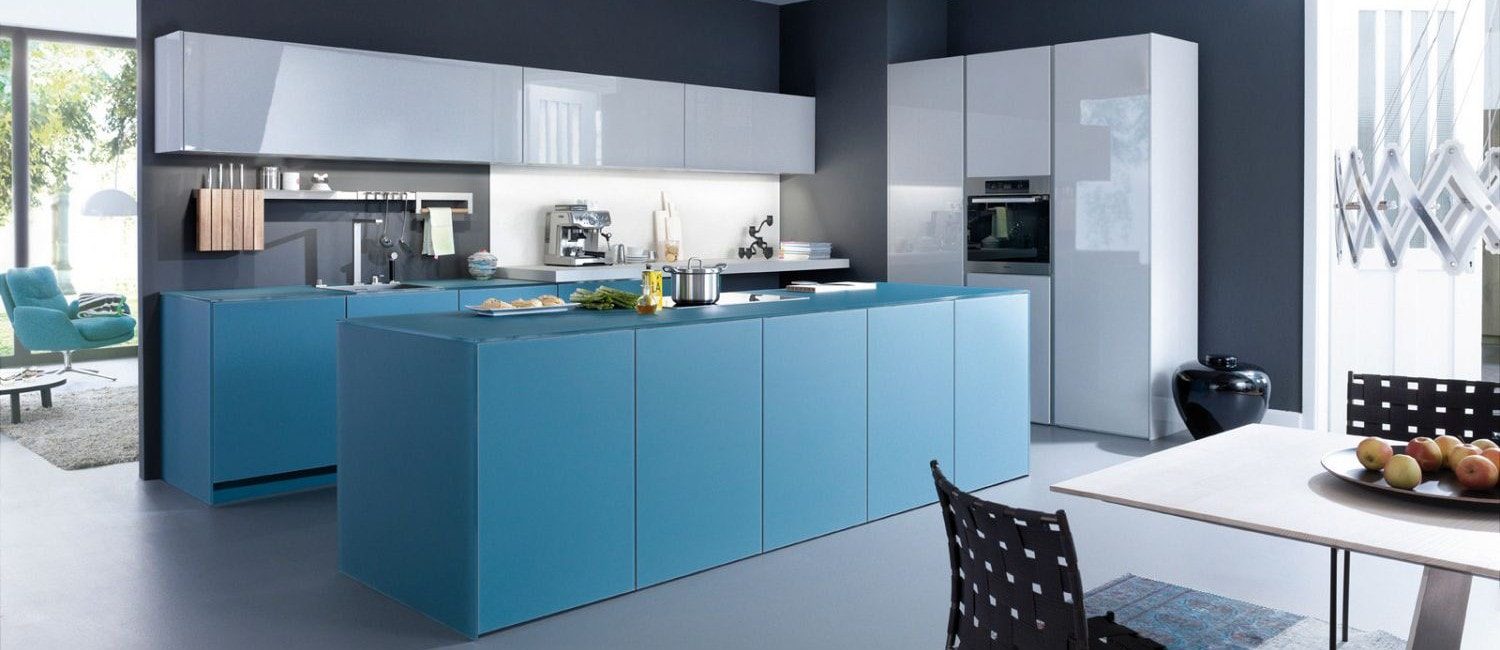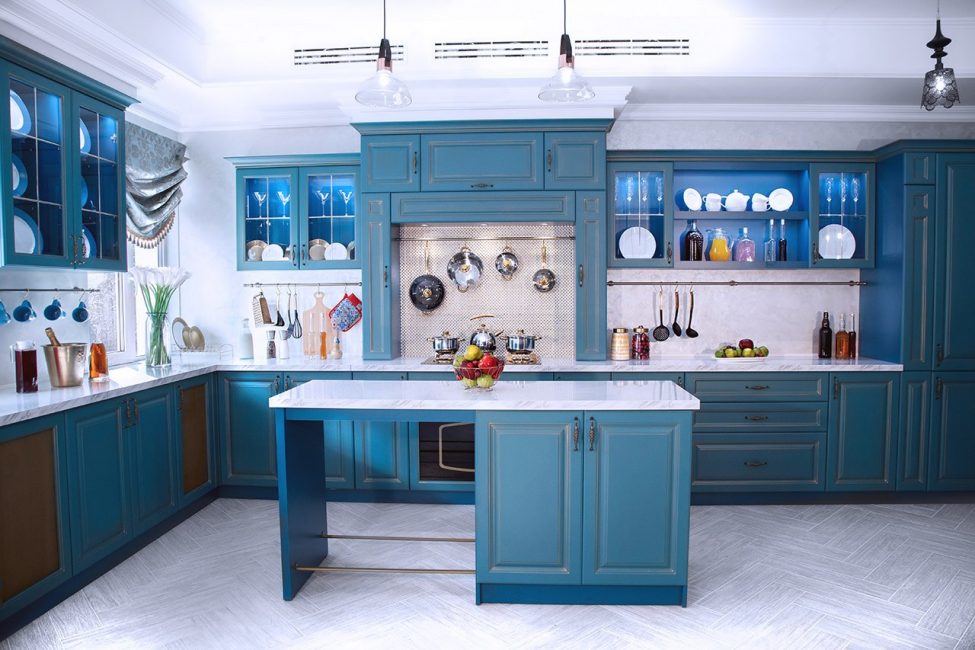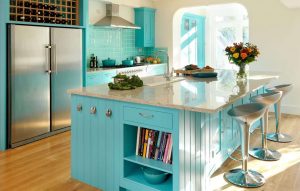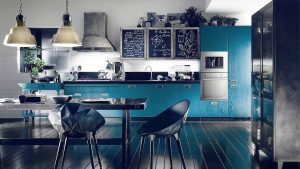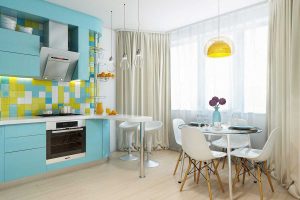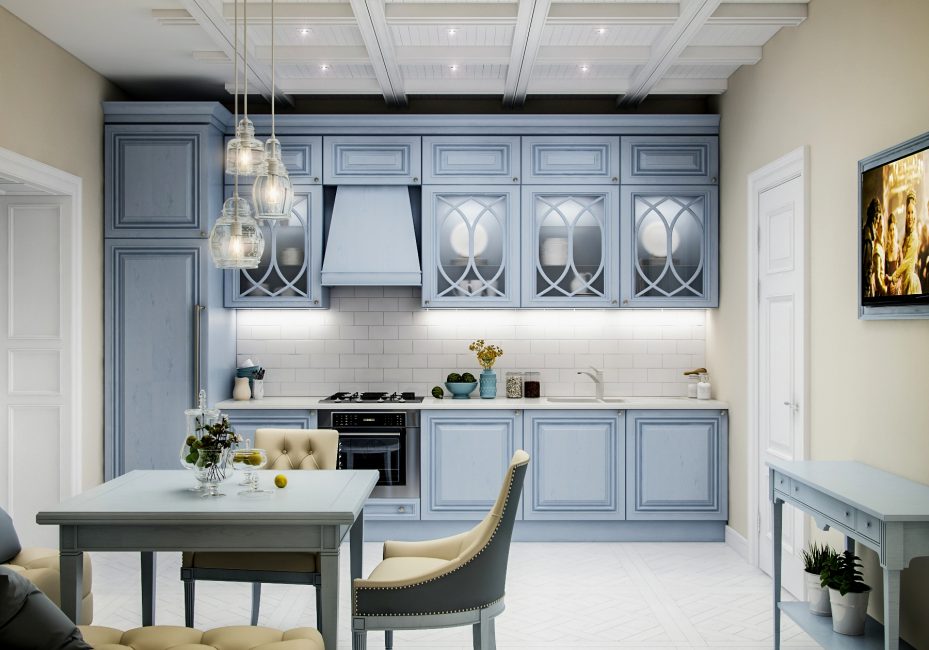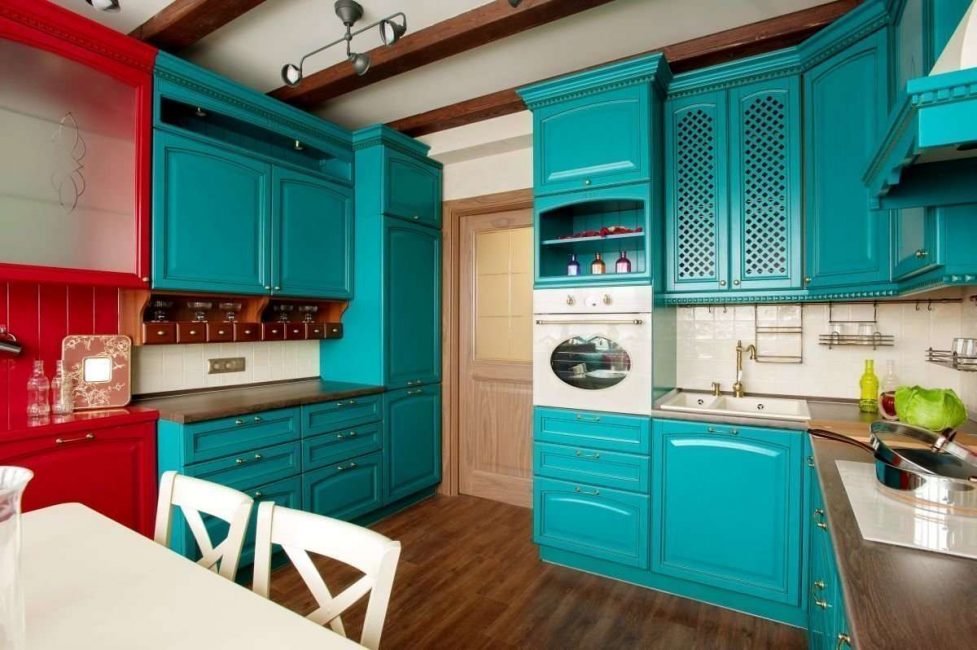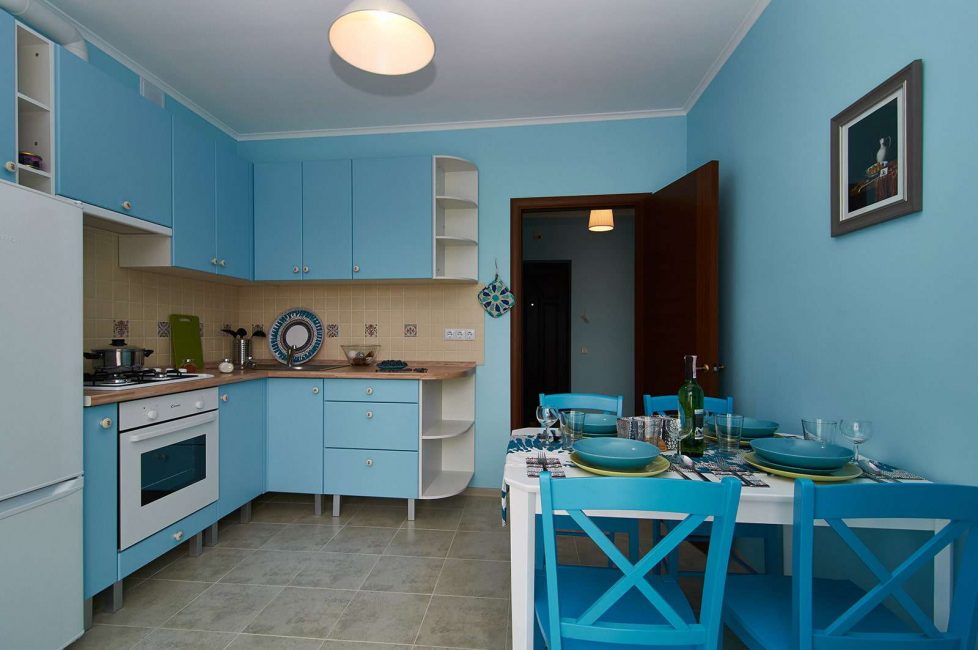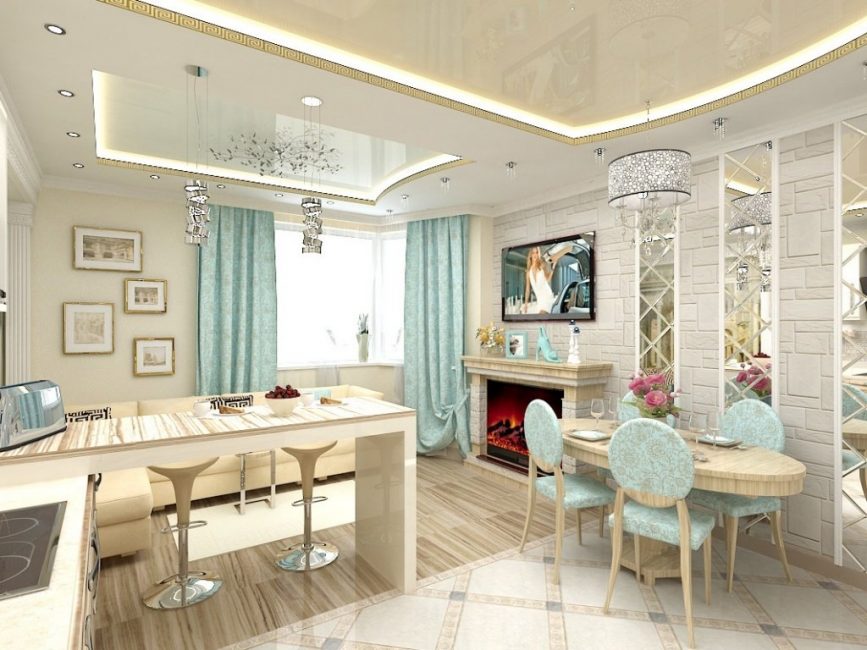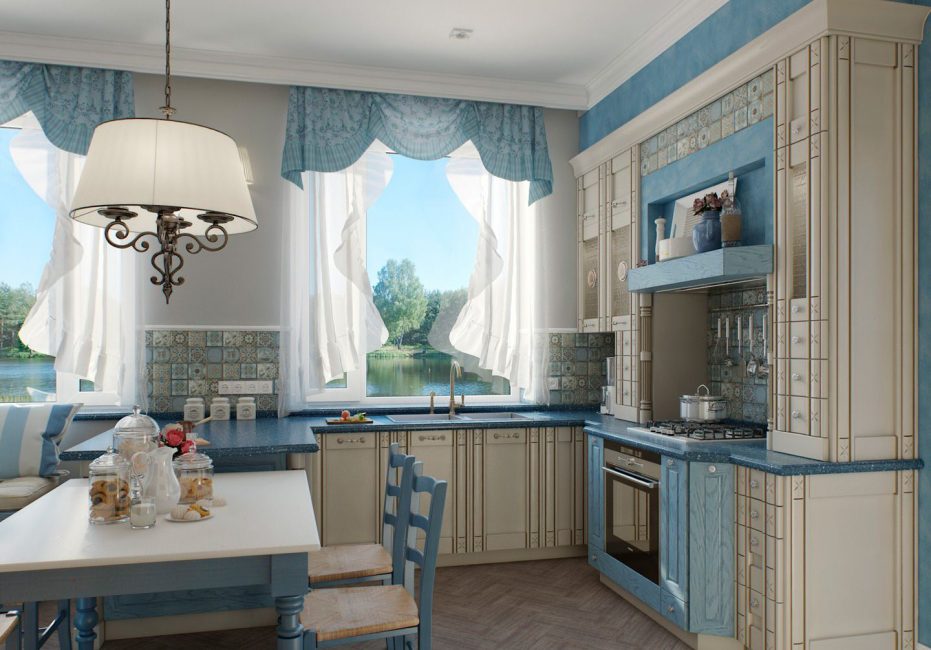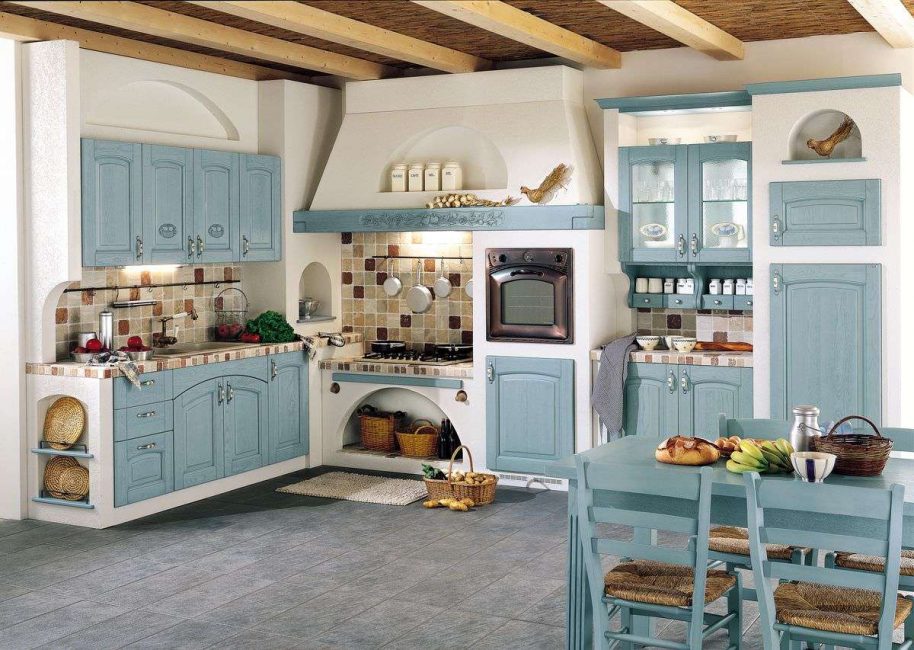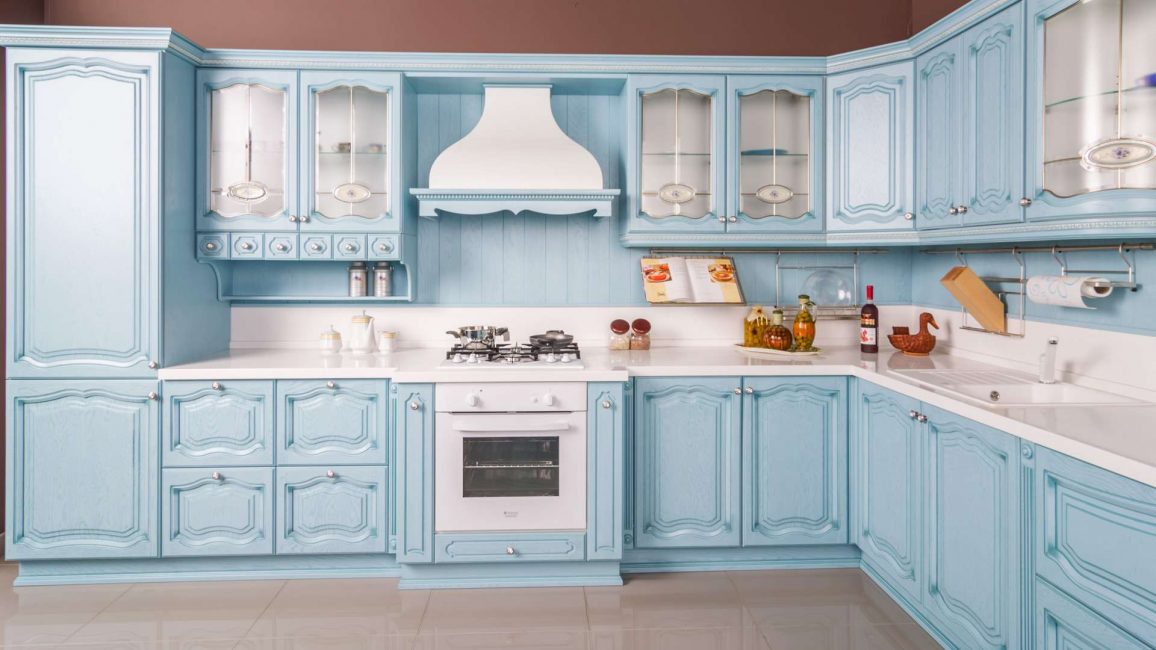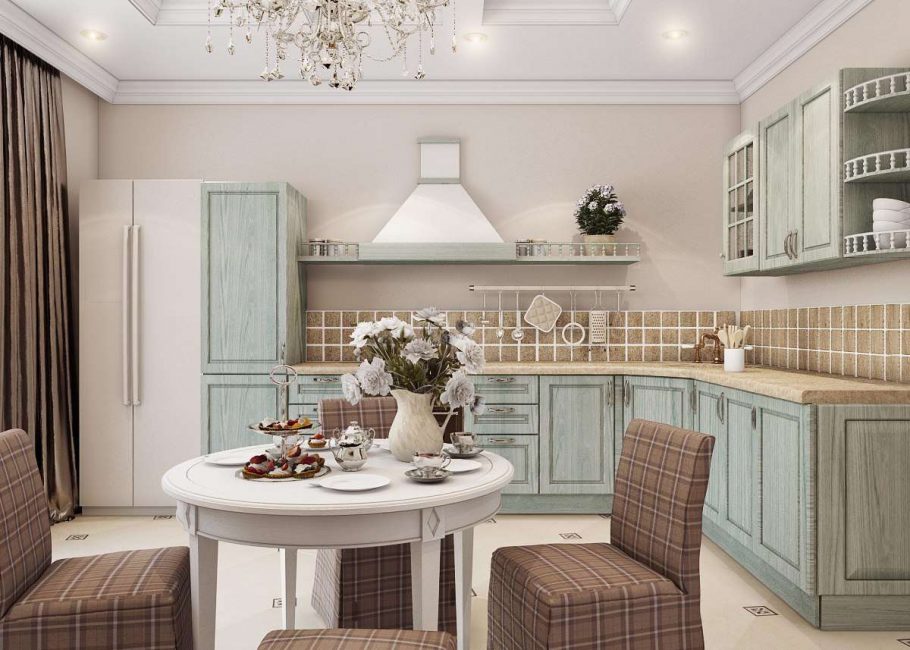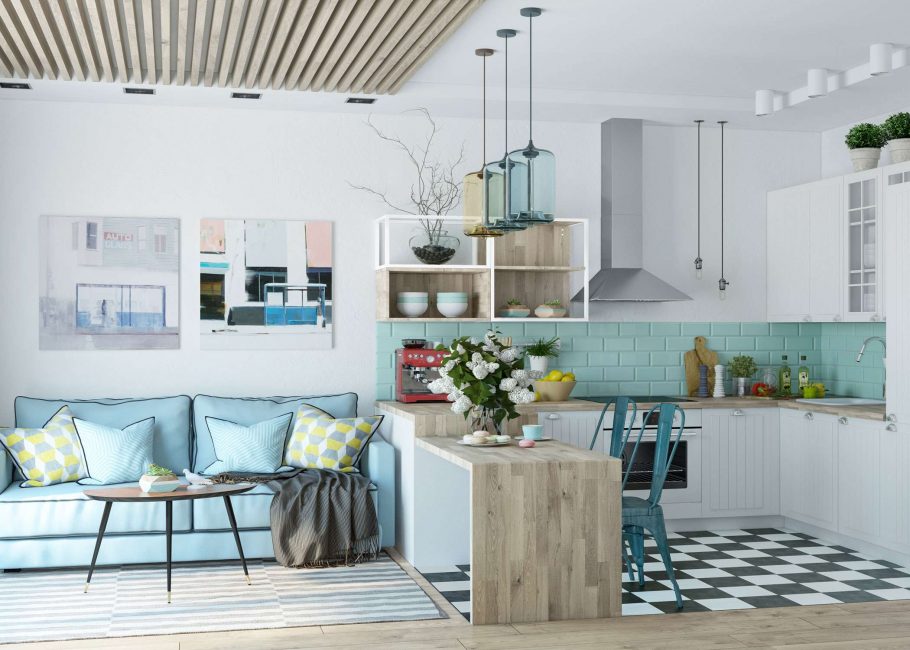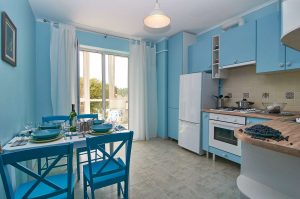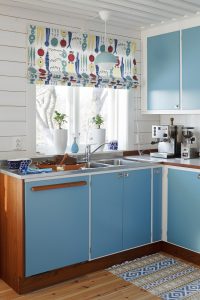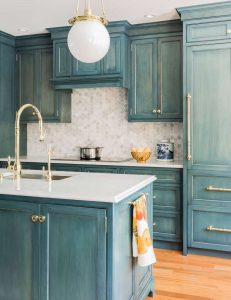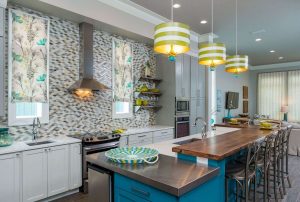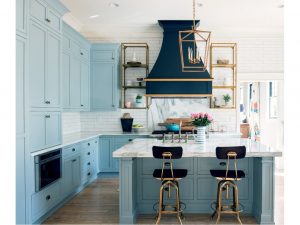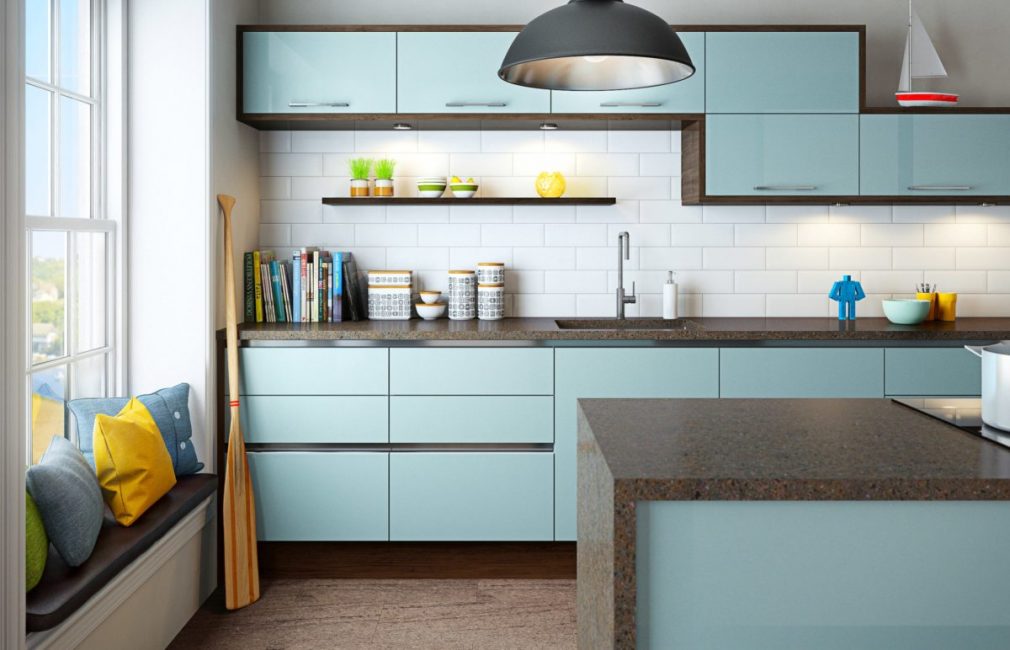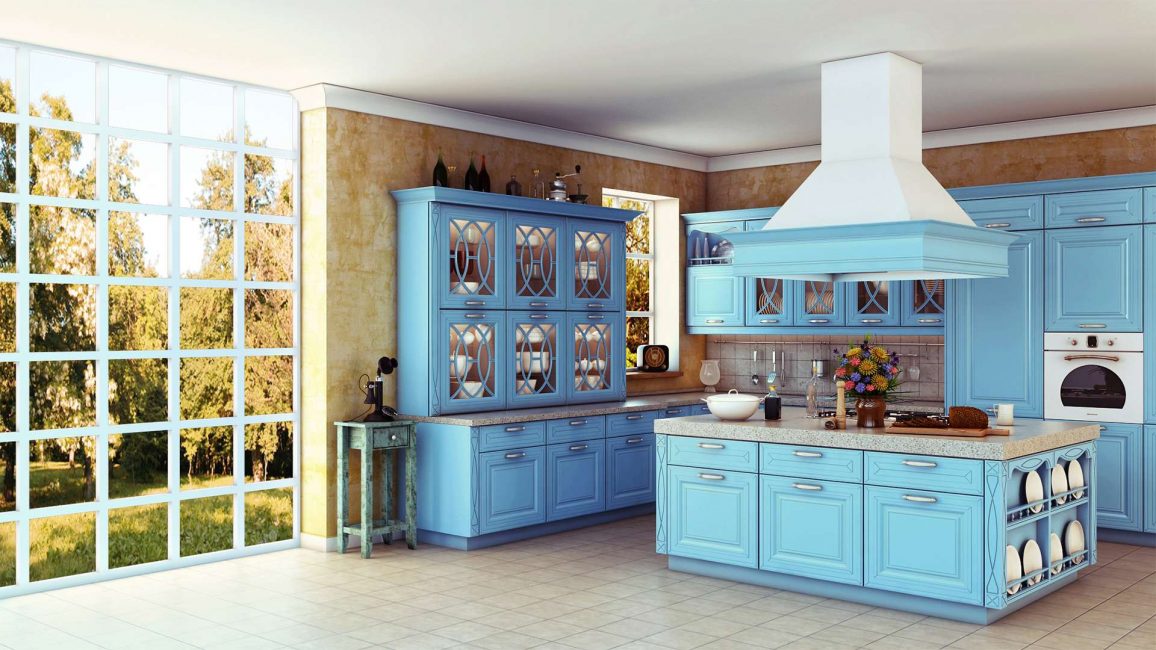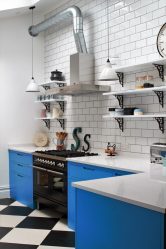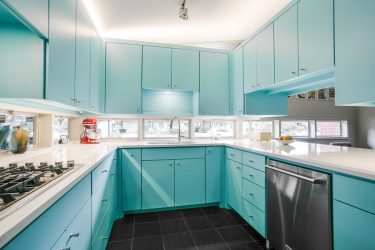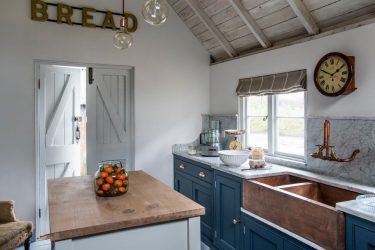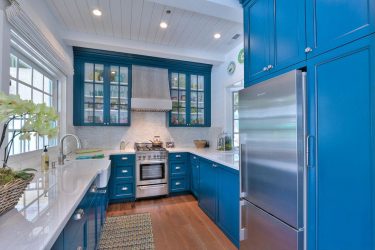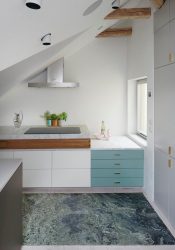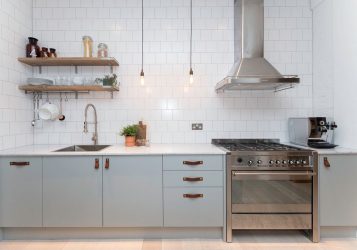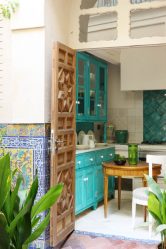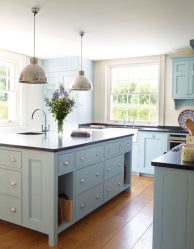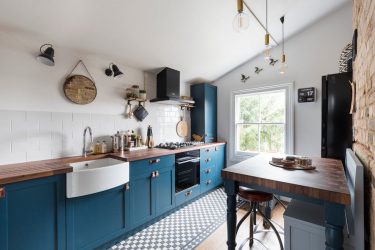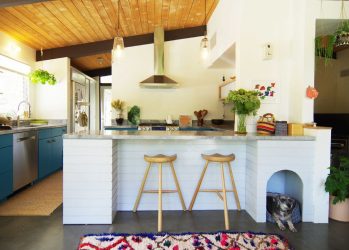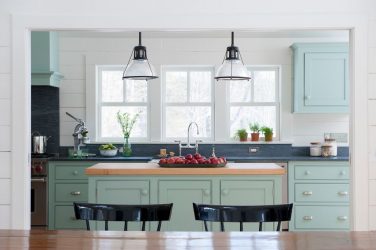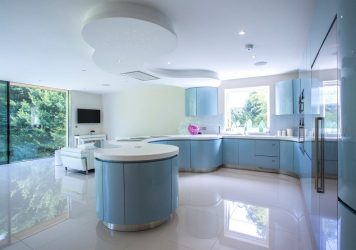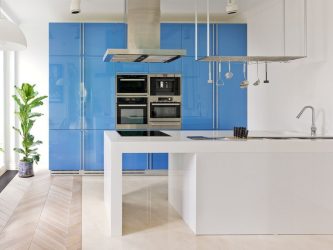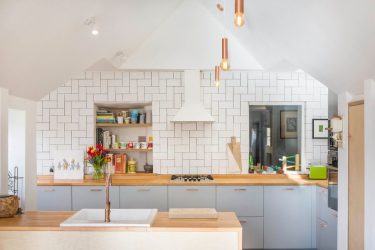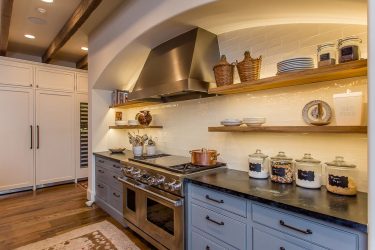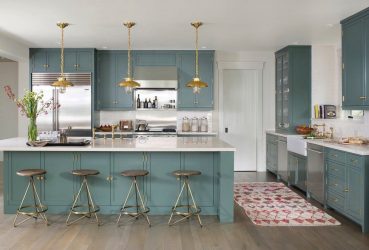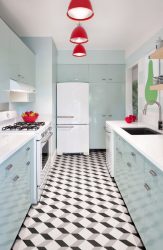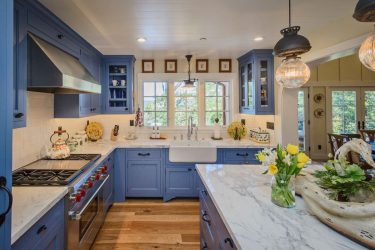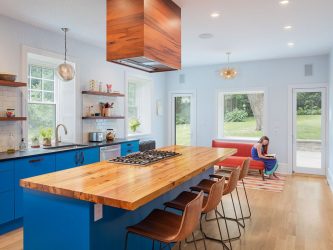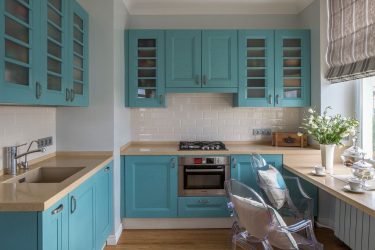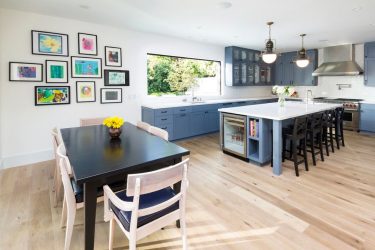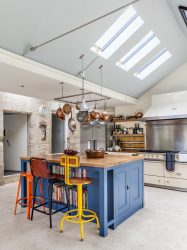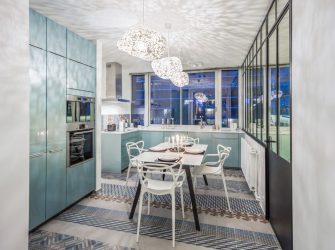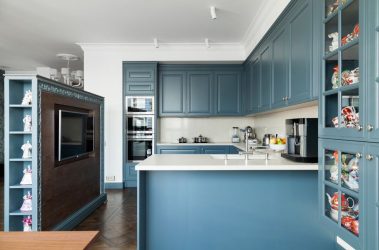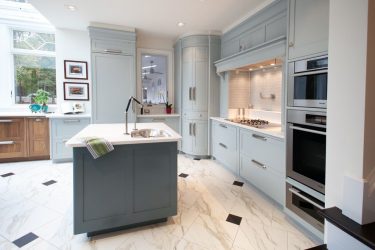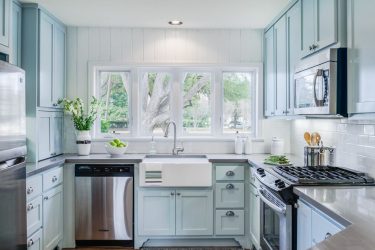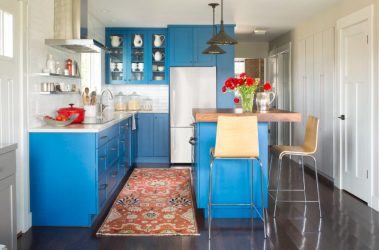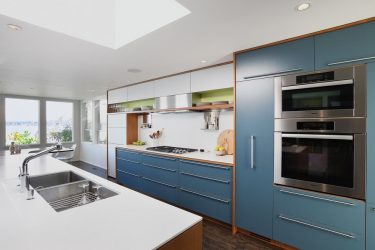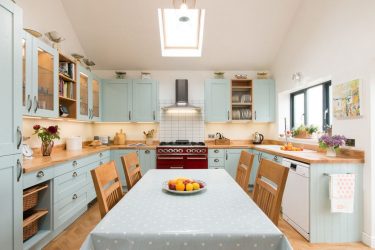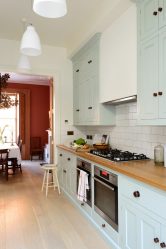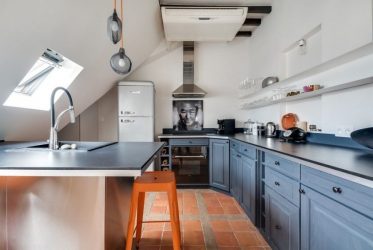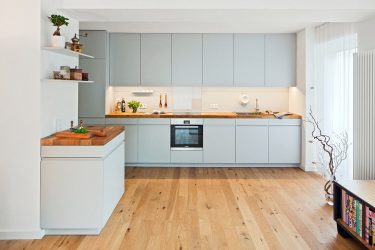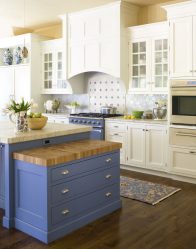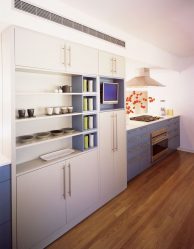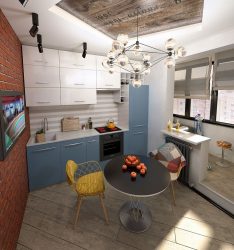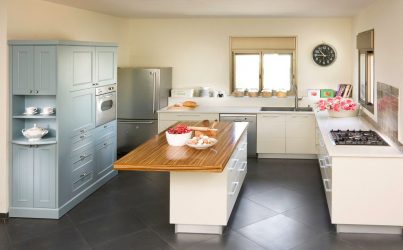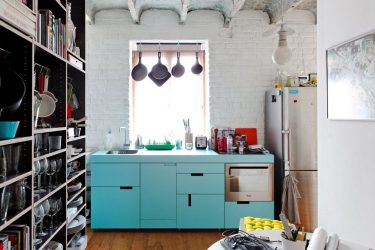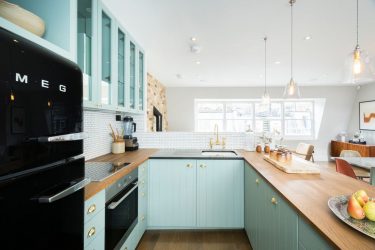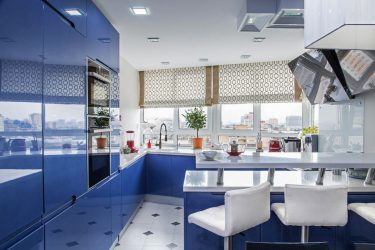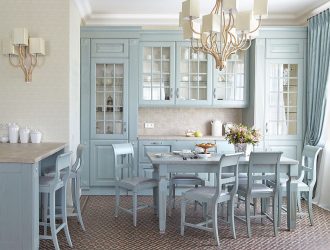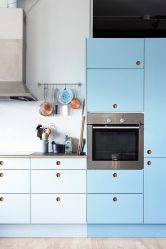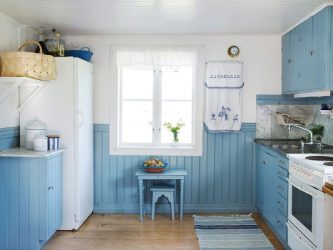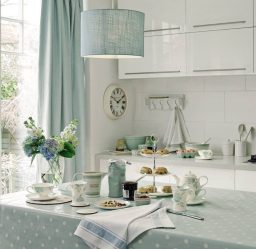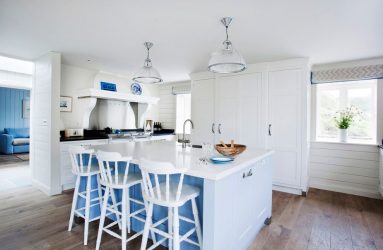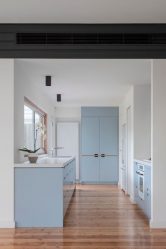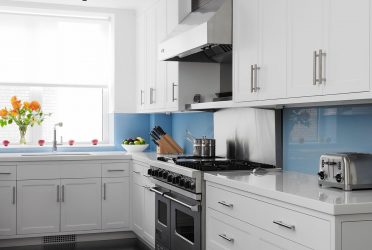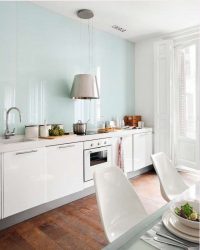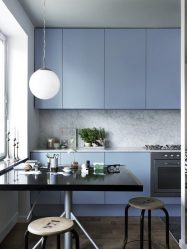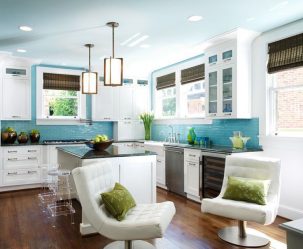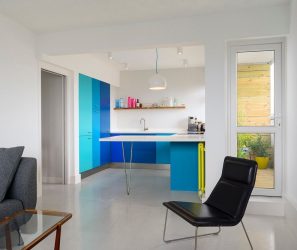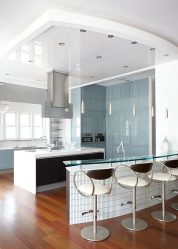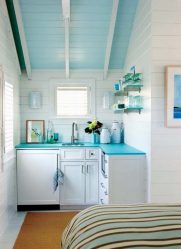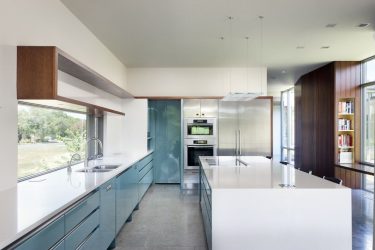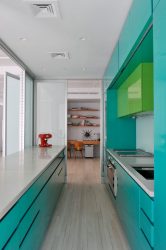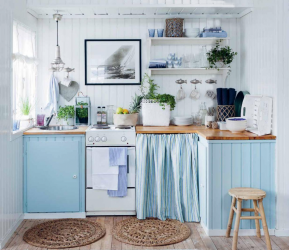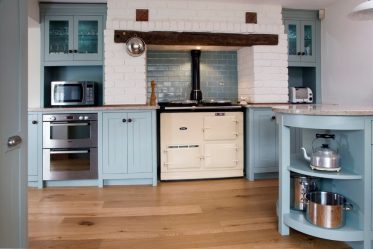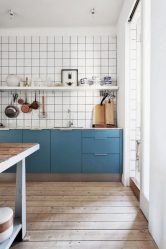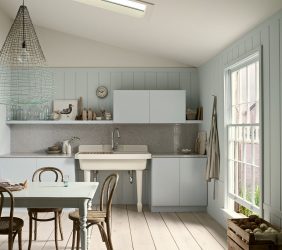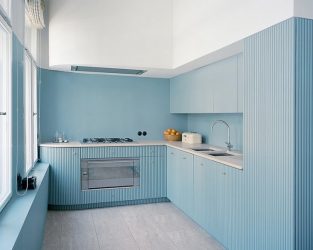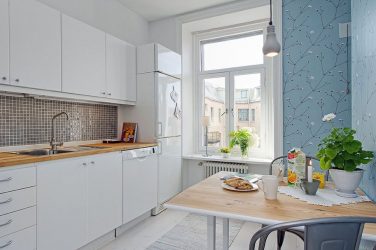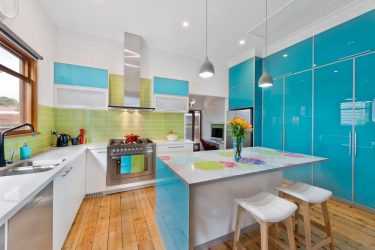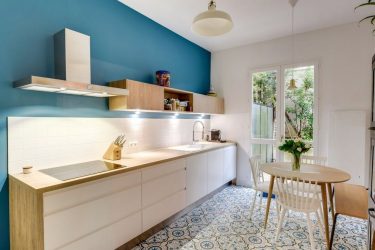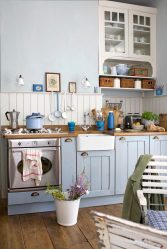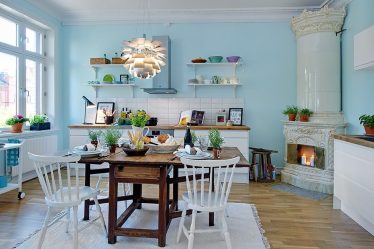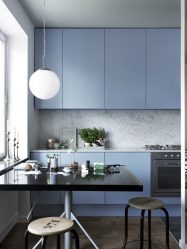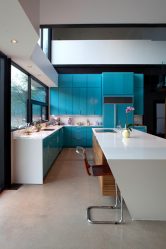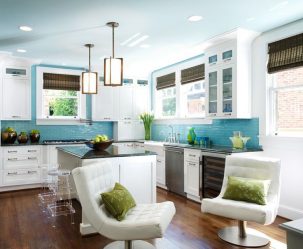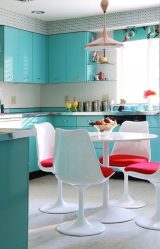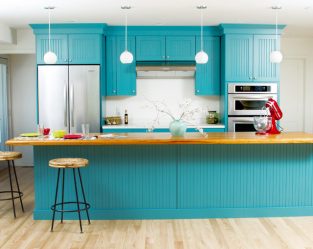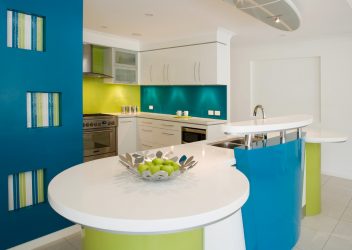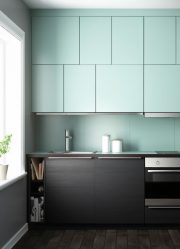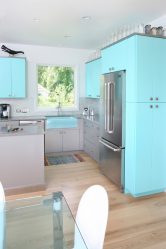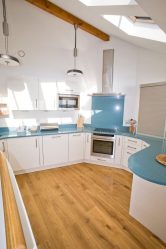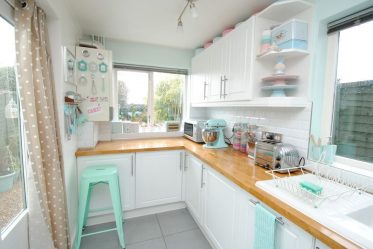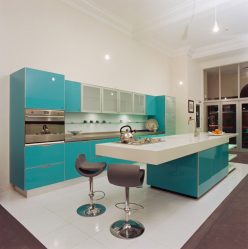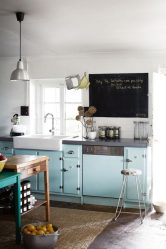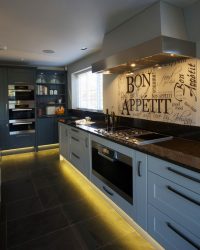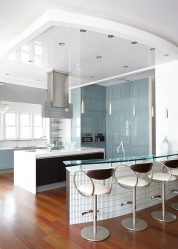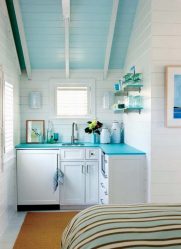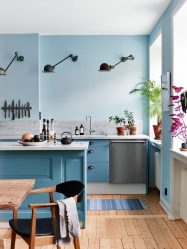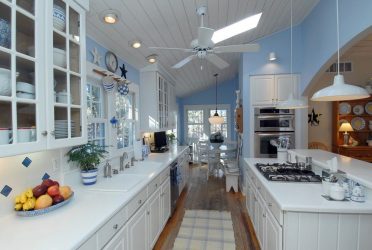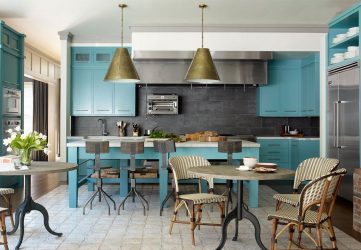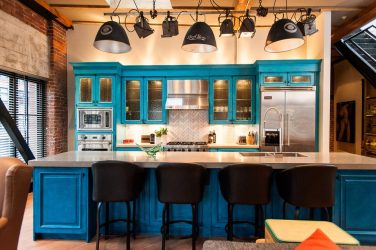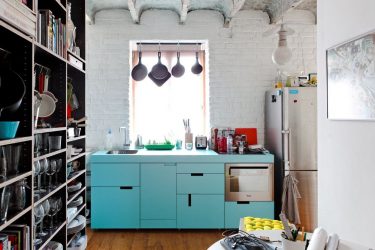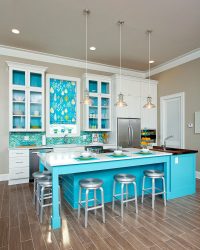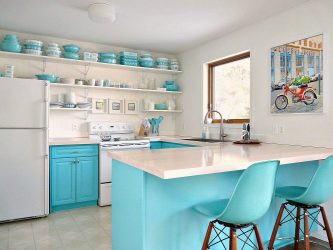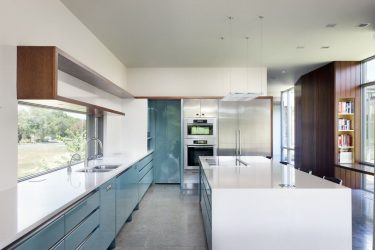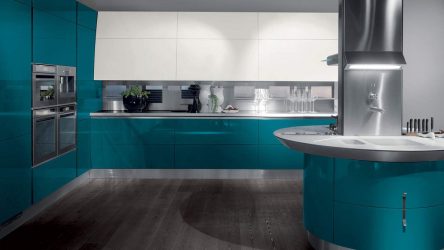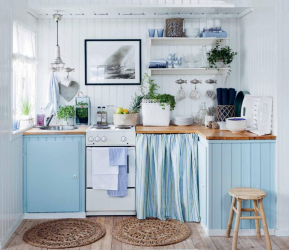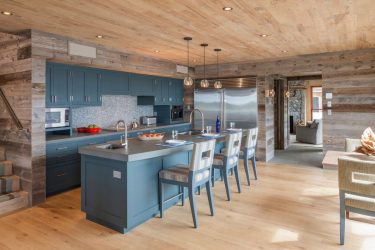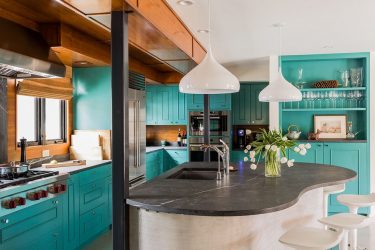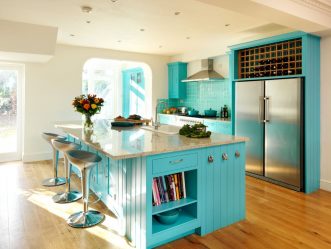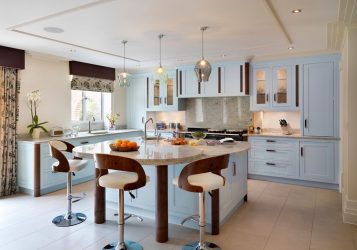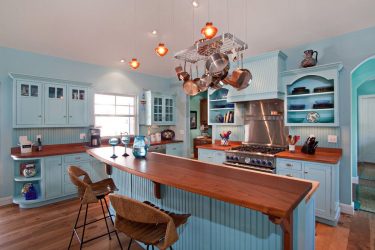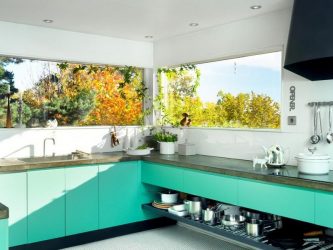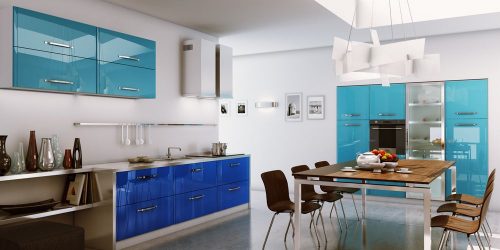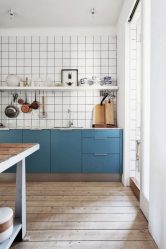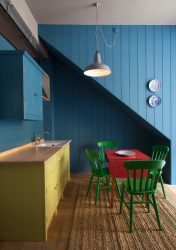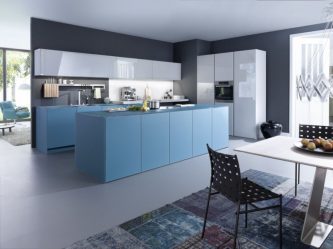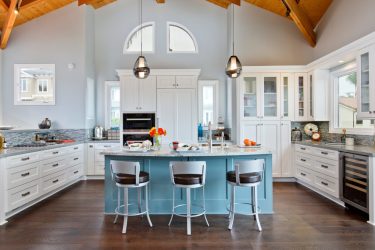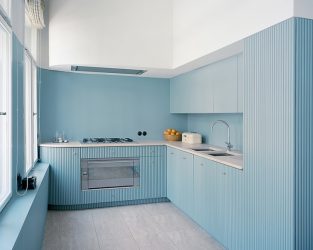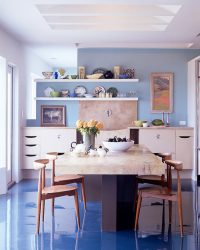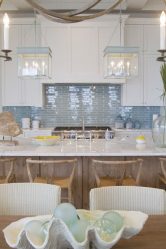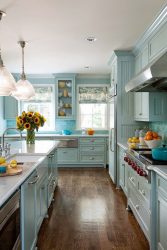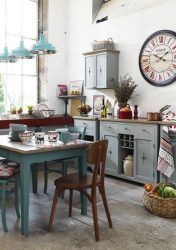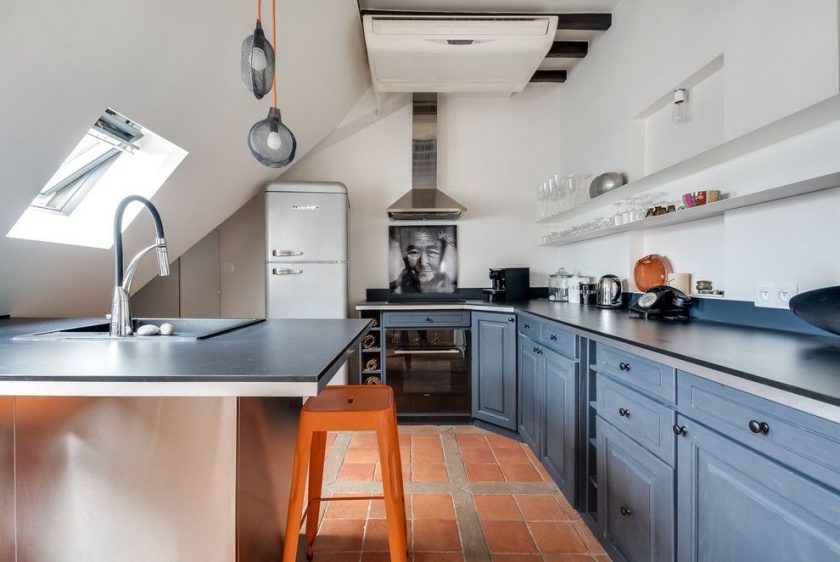
Blue kitchen in the interior - a common solution. It is a calm color, cold, helping to visually expand the space. If you pick the accessories well, add bright accents to it and don’t be mistaken with color combinations, the result can be astounding. This kitchen will remind you of the sky or the sea - which you like best. But, of course, in order to please you and enjoy the kitchen, you need to have patience and carefully select all its elements to one another. After all, disharmony is the main enemy of any interior.
Content of this article:
General color characteristic
Any color has a set of characteristics that is inherent only to him and which allows him to have a specific effect on the atmosphere in the room and on the mood of the people who are in it.
Blue color has the following features:
- Positive effect on space. Blue is a light cold color, and it is common for them to visually enlarge any room. Suitable for little ones kitchensfor narrow kitchens or for low kitchens ceiling - it will visually give a feeling of spaciousness and comfort.
- Positive effect on the mental state of a person. It has long been proven that different colors are perceived by people differently. Clean the black lowers mood, screaming red accelerates reactions and makes a person excitable. On the blue, human eyes rest. It calms, slightly inhibits the reaction of the nervous system, helps to tune in to a peaceful, measured mood. If you have nervous work, you constantly need to run and stress permeates through your life, this color will help you calm down a bit and bring a corner of the world into your life.
- The specific atmosphere. Blue, as already mentioned, is a cool color. And this means that the interior in it made will look cold and strict. In order for the kitchen not to be as a result uncomfortable and uninhabitable in appearance, it is necessary to take into account the location of the window. If it goes north, it is better to choose a different color. If west or east, you might think. If you go to the south, it won't make it uncomfortable and cool, except on completely cloudy days.
To paint everything only in blue is obviously a bad idea, since everything will look monotonous, monotonous and merge with each other. So much the better, that this color is combined with a large number of other colors and their shades - both bright and faded, both warm and cold.
return to menu ↑What are we going to paint?
In any kitchen there is a huge amount of objects and surfaces that can be painted blue, while the effect produced will be dramatically different.
return to menu ↑Floor
The main color of the room is used for its decoration. Can perform in the blue wall, floorthe ceiling as well furniture put a completely different, albeit a suitable shade, and as a result the kitchen will still seem blue.
It depends on the properties of the material how the applied color will look on it.
The following coatings may be applied on the floor:
- Tile. The most frequent solution for the kitchen is easy to clean, does not absorb anything, it looks beautiful, it lasts a very long time and does not change color at all. Two minuses - it cracks easily, if you drop something on it, and it is also very easy to slip on it. Blue tile looks interesting, slightly shiny. The main feature in the design - using tiles you can make intricate patterns on the floor.
- Linoleum. It is made of polymers, therefore it wears out faster, serves less and costs less. Nothing sticks to it either, no traces remain on it, it is easy to clean, but it can be scratched. His color palette is very rich, so you can choose any shade of blue. The main feature in the design - with the help of linoleum, you can make the floor very smooth and glossy, shiny.
- Laminate. Made of glued on the boards of chipboard polymer film. It reacts poorly to water if it gets into the seams, but it is easy to wash and serves longer than linoleum. Usually it is made like tree, because the blue laminate looks interesting and a bit strange - as if there were plants with blue wood in the world. The main feature in the design - with the help of laminate, you can replace the flooring, which is not in blue and which is not put in the kitchen.
You can just paint the floor, but the paint quickly wears out and peels off. Carpet in the kitchen can not be laid, because it is difficult to clean, and the flooring will very quickly become unusable.
Walls
The following coatings may be on the walls:
- Wallpaper. Paper can not be used in the kitchen, but you can use non-woven or glass wall paper. They are beautiful, durable, not afraid of changes in temperature and moisture, they come with patterns and colors, they are many - you can easily find a suitable shade of blue.
- Paint. It looks simple, allows you to make a painting, but you need to have some experience and a light hand, otherwise the whole wall will be in trickles. Keep in mind that when drying, the paint usually brightens, because to focus on the drawn finished tone, and not the one that you see on the walls when you first spend on them with a brush.
- Plaster. Decorative plaster allows you to make the surface is not just blue, but also relief - and, unlike wallpaper, there will be no seams on it at all. This solution is best if you want the walls to be associated with water - you can easily make whimsical waves on them.
- Clapboard. These are panels that are made of wood, painted in blue, so it will look like a laminate - just as amazing as if there were plants with blue wood in the world. Unless, of course, you decide to buy a wall panel, which will have so many layers of paint that the original shade will not look through at all.
- Plastic panels. Crack from any blow, but have a huge palette to choose from - you can choose plastic of any color, with any pattern. It will fail quite quickly and is not suitable for classic interiors, but it can be useful.
Ceiling
The ceiling can also be from different materials:
- PVC Stretch. This ceiling is bright, glossy, beautiful, but it interferes with the exchange of humidity in the room and you can spoil it in one awkward movement - it is very easy to tear. It looks good only in modern styles, because during the formation of styles of classic glossy ceilings, in principle, did not exist. Required to hire professional workers.
- Stretch fabric. It does not tear and passes moisture, but it will be harder and seams will surely be on it. It looks interesting, it can be painted on it - very effectively, thanks to the texture, there will be such a ceiling, depicting a sky with clouds.
- Plaster. Classic. It also looks convex, interesting, it is very easy to make patterns on it, it does not dampen and serves for a long time.
- Drywall. Allows you to form on the ceiling on several levels, which is very useful for zoning. He will have a beautiful uniform color, plus it is very hard to spoil. But in order to attach it, you will have to hire professional workers, most likely.
- Paint. The easiest way is to apply it yourself, if you act accurately and carefully, otherwise there will always be drips. It looks unpretentious and simple, not suitable for all styles.
It will be interesting to you:
Brown kitchen in an interior (120 + Photo) - Successful combinations for Smart ideas
Combinations
It is important not only to choose a practical beautiful blue material for decoration - it is also important to combine it with the rest so that it looks good. First of all, the color of the material plays, since the properties of everything that can be applied in the kitchen are more or less similar.
The combination depends on the characteristics of the kitchen:
- If the kitchen is frankly small. Blue color in this case can be a real salvation, and in order to visually expand the space, you need to choose its lightest shades - from a slightly darker floor to a completely transparent-weightless ceiling. May be useful mirrors, photo wallpapers with a sea view, the glossy surface of the floor and ceiling - of course, not all at once, but one thing.
- If the kitchen is frankly big. This happens when the room is more than necessary to feel comfortable. In this case, dark shades of blue combined with bright accents are suitable - they will reduce the kitchen, slightly shifted walls. However, it is very important not to convey, not to use too dark color and not to forget about the bright accent, otherwise the impression may turn out to be gloomy.
- If the kitchen is too high. When you enter such a room, it seems that you have come to the Petersburg well-yard. To avoid this, you need to make the ceiling darker than the rest. It can be a shade of blue or a contrasting color to it - the main thing is to get the impression that the ceiling is lower than it actually is.
- If the kitchen is too low. Then the ceiling, on the contrary, should be light, and everything else is darker. Vertical stripes will look good - they will make the walls seem to be higher.
- If the kitchen is too narrow. In this case, you can do differently.Put a floor with a diagonal pattern on the floor, make a wall-paper on one of the walls, use the lightest shades of blue. We can single out one wall - most often the one that is in the butt - so that it draws attention to itself and it seems that it is closer than it actually is. For this you can use a contrasting color - yellow or orange. Although suitable and colorful decoration in the spirit of intricate painting.
- If the kitchen is too wide. Then the walls are made darker, and the floor and ceiling are lighter. As a result, she seemed pulled up.
Finishing is a difficult thing, but if you approach it with patience and imagination, the result will be amazing.
Suitable styles
If you talk about what materials are, you can and without a clear reference to the style, then here in the case of furniture without it can not do. There are too many kitchen sets, dining corners and decor items, so that you can first explain what they are, and then choose something appropriate from the variety.
Blue color looks good in both classic and modern interior styles.
return to menu ↑Classic
This is the style that was formed in Europe in the eighteenth century and was particularly popular in France:
- Floor. Only and exclusively tile - does not recognize any other materials of the classic. And cheap varieties can be immediately struck out of consideration, it should be an expensive painted or patterned tile, beautiful in itself.
- Ceiling. Of course, it would be strange to support it with pillars in a modern apartment, but stucco and different levels may well take place. If it seems to you very much pompous, you can make a thin floral pattern along the edge of the ceiling - elegant and not too noticeable.
- Walls. Natural materials soothing shades. Nothing flashy, and, of course, no plastic panels.
- Furniture. Classic, from real wood. No special pomp, the only thing that is acceptable as a decoration - carving.
- Lighting. On the windows of fabric curtains of a dark shade. Under the ceiling is a small, elegant chandelier, you can wrought. On the table must be a lamp under the lampshade.
- Decor. Textiles are moderate, without an accent. Trinkets are extremely expensive, with a claim to historicity. A well-decorated plates, cups, a couple of statuettes somewhere on the shelves, beautiful cutlery, an elegant kettle to warm on the stove.
The classics is beautiful. There are no particularly bright accents, blue can be combined with white, beige and real wood colors.
Provence
This is the seventeenth century, France - the opposition to the bulky styles of the time. The main property of Provence - lightness and lightness, to which the blue color fits just fine:
- Floor. The tile, which is by no means smooth - exceptionally rough, can even make it artificially old, so that it looks like a natural stone. Patterns on it is not provided, but you can lay a small carpet.
- Walls. Natural materials - wallpaper, wall paneling, natural stone trim. Vegetable patterns are allowed, which do not make the interior heavier, but make it more interesting.
- Ceiling. No stretch ceilings and drywall. Exceptionally paint or plaster, plus wooden beams - it’s good if it is real, but you can also make a high-quality imitation. All together should give a sense of a country house.
- Nuances of finishing. Doors should be made of light wood, preferably with traces of time that can be applied artificially. Windows the more, the better (but not panoramic), preferably with snow-white wooden frames.
- Furniture. Be sure to classic outlines, easy. As a material - a tree can be painted or with carved patterns. A good solution would be to put wicker chairs and chairs, with blue cushions on the seats, to make it more comfortable.
- Lighting. Natural - it is emphasized, a curtain of light fabrics, it is possible in the style of a cafe, where half of the window remains open all the time. Artificial - imitating candles or small lamps under bright lampshades. The light should be yellowish, warm, diffused and very comfortable.
- Decor. The Provence can not do without the cute little accessories. On the table, be sure to have a vase with fresh flowers (it can become a beautiful accent in the blue kitchen, since pink and scarlet combine well with it), on the windowsill there are ceramic pots with flowers. Spices in special glass jars, on each paper faded from time to time tag. As a native bird cage fit - forged, antique-looking.
You can combine blue with milky-white, with beige, with light green, cream, lilac, pale pink, olive.
Scandinavian style
He came to us from the northern countries and its main feature is a great love for open space and sunlight.
Functional, harmonious, this style differs from minimalism, which has similar principles, in that it is distinctly classical:
- Floor. Usually use laminate, not blue, and the color of light wood. To make it more comfortable, add a warm carpet of one of those colors that the style takes.
- Walls. Wall paneling, brick, paint or plaster. You can forget about plastic panels right away, about wallpaper too - naturalness is at the forefront, and neither plastic nor synthetic fiber fits into it.
- Ceiling. The plastered ceiling looks best - this is how it was finished when the style was just being born. It would be nice to look dye or stretched fabric - but certainly without seams and without any gloss.
- Furniture. Solid, from a tree, simple in the most classical sense. If you want to use textiles in the decor - for example, to wrap chairs around the seats - you need to use natural fabrics. Closed cabinets better avoided because the Scandinavian style provides maximum openness and considers the shelves the best solution. In the kitchen, you can beat that as an interesting idea.
- Lighting. The window must be wooden, and the frame is best painted white. Curtains as light as possible, from natural fabric, you can remove them altogether so that they do not interfere with the passage of sunlight. The rest of the lighting is organized through the abundance of small fixtures - it must be a desk lamp, be sure to add sconces to it and, if there is a kitchen sofafloor lamp. Light as much as possible, and it should be pleasant.
- Decor. More results of natural crafts - wicker baskets, self-molded figurines, embroidery, knitted tablecloths. A lot of textiles from natural fabrics, white ceramic plates and cups with blue patterns. You can add fresh flowers in ceramic pots.
The main thing is that the newcomer has a feeling of space and light.
Of course, these are not all styles in which you can decorate the blue kitchen. Can apply country musicminimalism look sideways loft or nautical style.
Before you decide that everything is ready, make a sketch of your future kitchen and see if you like it. Otherwise, it may turn out that the executed plan will disappoint you. In general, the blue kitchen, where everything is carefully selected, will look great.
return to menu ↑VIDEO: Interiors for kitchen design
Blue kitchen
Blue kitchen design
